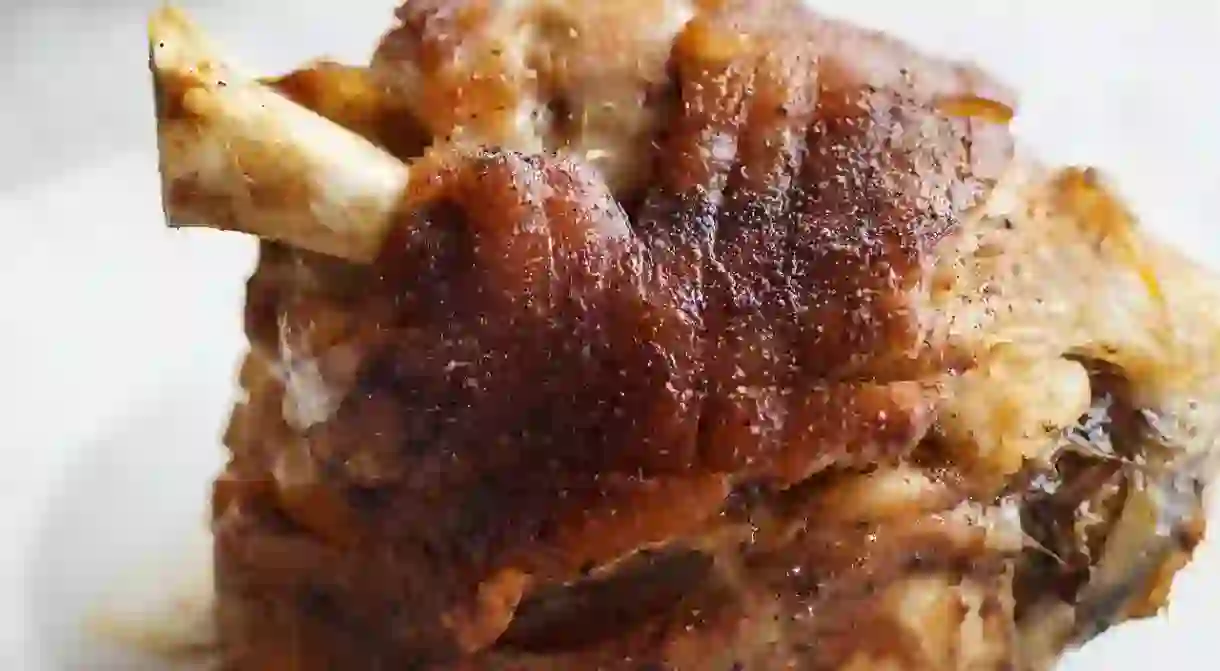What to Do When There’s a Pig Foot on Your Plate: A Beginner’s Guide to Haxe

In Germany with no money for steak? No problem. There are still plenty of things to eat from cheaper cuts of meat that are still delicious and filling. One of the most common is haxe (also called Eisbein), a Bavarian specialty that you can find on Brauhaus menus all over the country. Farmers were, after all, the original nose-to-tail pioneers, so it should be no surprise that they found a delicious way to prepare pig’s feet. The secret? Beer. Of course.
What is haxe?
If you want to get technical, haxe is the forearm or lower thigh part of the pig, not the actual foot. Even so, it can be quite a shock to see a giant piece of crispy, fatty pork coming your way with one or two bones sticking out of the top. The good news is the haxe has been cooked for four to five hours and braised in onion-infused dark beer, so will be moist and a little sweet. Also salty. Extremely salty. German chefs apparently did not get the memo regarding the dangers of excess salt in the diet.

How to eat haxe
Haxe is not fine dining, it is farm food. As such, there’s no delicate way to eat it. Just grab a fork and knife and get stuck in there. The meat should be soft enough to fall away without too much coaxing, much in the manner of pulled pork. It’s all edible—including the skin—but unless sucking out the marrow from the bones is on your list of life goals, you may wish to stop at picking all the meat off with your teeth.
The side dishes are various, sometimes depending on where in the country you’re enjoying the particularly delicacy, but expect to see some combination of sauerkraut, knudeln (potato dumplings), spätzle (a sort of German pasta), roasted potatoes, rotkohl or maultaschen (German ravioli/perogies).
Note: in Brauhauses, salad on the list of side dishes means a couple lettuce leafs, a slice or two of cucumber and a few cherry tomatoes. No dressing, nothing.
Haxe tip
For diners of a delicate disposition who are not thrilled by the idea of dealing with a giant hunk of meat in the middle of their plate: it is possible to order the dish without bones (ohne knochen). In fancier restaurants, haxe is more likely to be served nicely carved with a light, modern interpretation of the traditional side dishes. In the Brauhaus it comes both ways. If it’s important, just ask the waiter when ordering.














